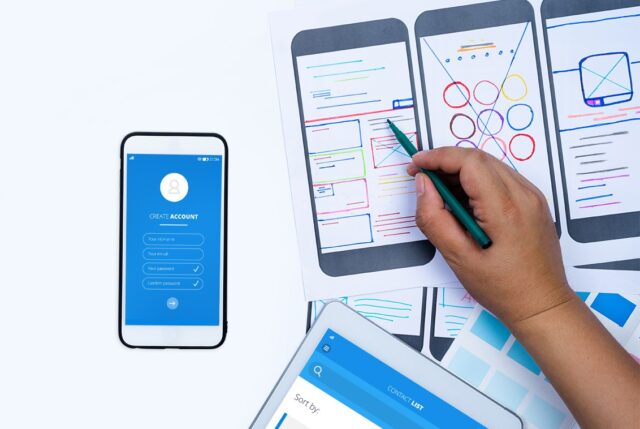Mobile app development is a complex process that requires careful planning, execution, and ongoing maintenance. With millions of apps available on various platforms, ensuring your mobile app stands out and provides a great user experience is essential. This blog post outlines best practices for mobile app development that can enhance the overall success of your software projects.

1. Define Clear Objectives and Requirements
Before diving into development, it’s crucial to define clear objectives and requirements for your mobile app. Consider the following:
- Identify Target Audience: Understand who your users are, their preferences, and pain points. Conduct market research to identify trends and user needs.
- Set Clear Goals: Determine what you want to achieve with your app, whether it’s user acquisition, engagement, or revenue generation. Establish measurable KPIs to track progress.
2. Choose the Right Development Approach
Select a development approach that aligns with your project goals and resources:
- Native App Development: Build separate apps for iOS and Android using platform-specific languages (Swift for iOS and Kotlin for Android). This approach provides the best performance and user experience but can be more costly and time-consuming.
- Cross-Platform Development: Use frameworks like Flutter, React Native, or Xamarin to create a single codebase that works across multiple platforms. This can save time and resources but may sacrifice some performance and platform-specific features.
- Progressive Web Apps (PWAs): Consider building a PWA if you want to reach users across platforms with a web-based app that behaves like a native app. PWAs offer a good balance of functionality and accessibility.
3. Focus on User Experience (UX) and User Interface (UI)
A great user experience is critical for user retention and satisfaction. Follow these design principles:
- Intuitive Navigation: Design a simple and intuitive navigation structure that allows users to find what they need quickly. Use familiar icons and patterns to enhance usability.
- Consistent Design Language: Maintain consistency in design elements such as colors, fonts, and button styles. This helps create a cohesive look and feel across the app.
- Responsive Design: Ensure your app looks and works well on various screen sizes and orientations. Use flexible layouts and design components that adapt to different devices.
4. Implement Agile Development Practices
Agile methodologies can enhance collaboration, flexibility, and speed in mobile app development. Consider these practices:
- Iterative Development: Break the project into smaller iterations (sprints) to deliver incremental improvements and features. This allows for regular feedback and adjustments based on user input.
- Cross-Functional Teams: Foster collaboration among developers, designers, and stakeholders. Encourage communication and shared responsibility for the project’s success.
5. Prioritize Performance and Optimization
Performance directly impacts user satisfaction and retention. Implement the following optimization strategies:
- Optimize App Size: Keep the app size minimal by optimizing assets (images, videos, etc.) and removing unnecessary libraries. A smaller app is more appealing to users.
- Reduce Load Times: Minimize load times by optimizing network requests, using caching mechanisms, and employing lazy loading for non-critical resources.
- Monitor Performance: Use tools like Firebase Performance Monitoring or New Relic to track app performance metrics, identify bottlenecks, and address issues proactively.
6. Ensure Security and Privacy
Security and user privacy are paramount in mobile app development. Implement the following measures:
- Data Encryption: Encrypt sensitive user data both in transit and at rest to protect it from unauthorized access.
- Secure Authentication: Use secure authentication methods (e.g., OAuth, biometric authentication) to safeguard user accounts.
- Compliance with Regulations: Ensure your app complies with relevant data protection regulations, such as GDPR or CCPA, to protect user privacy and avoid legal issues.
7. Thorough Testing and Quality Assurance
Comprehensive testing is essential to ensure a high-quality mobile app. Follow these testing best practices:
- Test on Real Devices: Conduct testing on actual devices to identify issues related to performance, usability, and compatibility. Emulators may not accurately represent real-world conditions.
- Automate Testing: Use automated testing tools (like Appium or Selenium) to streamline regression testing and improve coverage.
- Beta Testing: Conduct beta testing with a limited user group to gather feedback and identify bugs before the official launch.
8. Plan for Ongoing Maintenance and Updates
The work doesn’t end with the app launch. Plan for ongoing maintenance and updates to keep your app relevant and functional:
- Monitor User Feedback: Regularly gather user feedback through reviews and surveys. Use this information to make informed updates and improvements.
- Release Regular Updates: Address bugs, introduce new features, and enhance performance through regular app updates. Keep users informed about changes and improvements.
- Stay Updated on Platform Changes: Keep track of updates and changes to mobile operating systems (iOS and Android) to ensure compatibility and take advantage of new features.
9. Leverage Analytics for Continuous Improvement
Use analytics tools to gain insights into user behavior and app performance:
- Track User Engagement: Monitor key metrics such as user retention, session duration, and conversion rates to understand how users interact with your app.
- Make Data-Driven Decisions: Use analytics data to inform design choices, feature prioritization, and marketing strategies.
Conclusion
By following these best practices for mobile app development, you can create high-quality, user-friendly applications that stand out in a crowded market. From defining clear objectives and choosing the right development approach to prioritizing UX/UI and ensuring security, each step in the process plays a crucial role in the success of your software project. As mobile technology continues to evolve, staying adaptable and focused on user needs will be key to achieving long-term success in mobile app development.


No responses yet